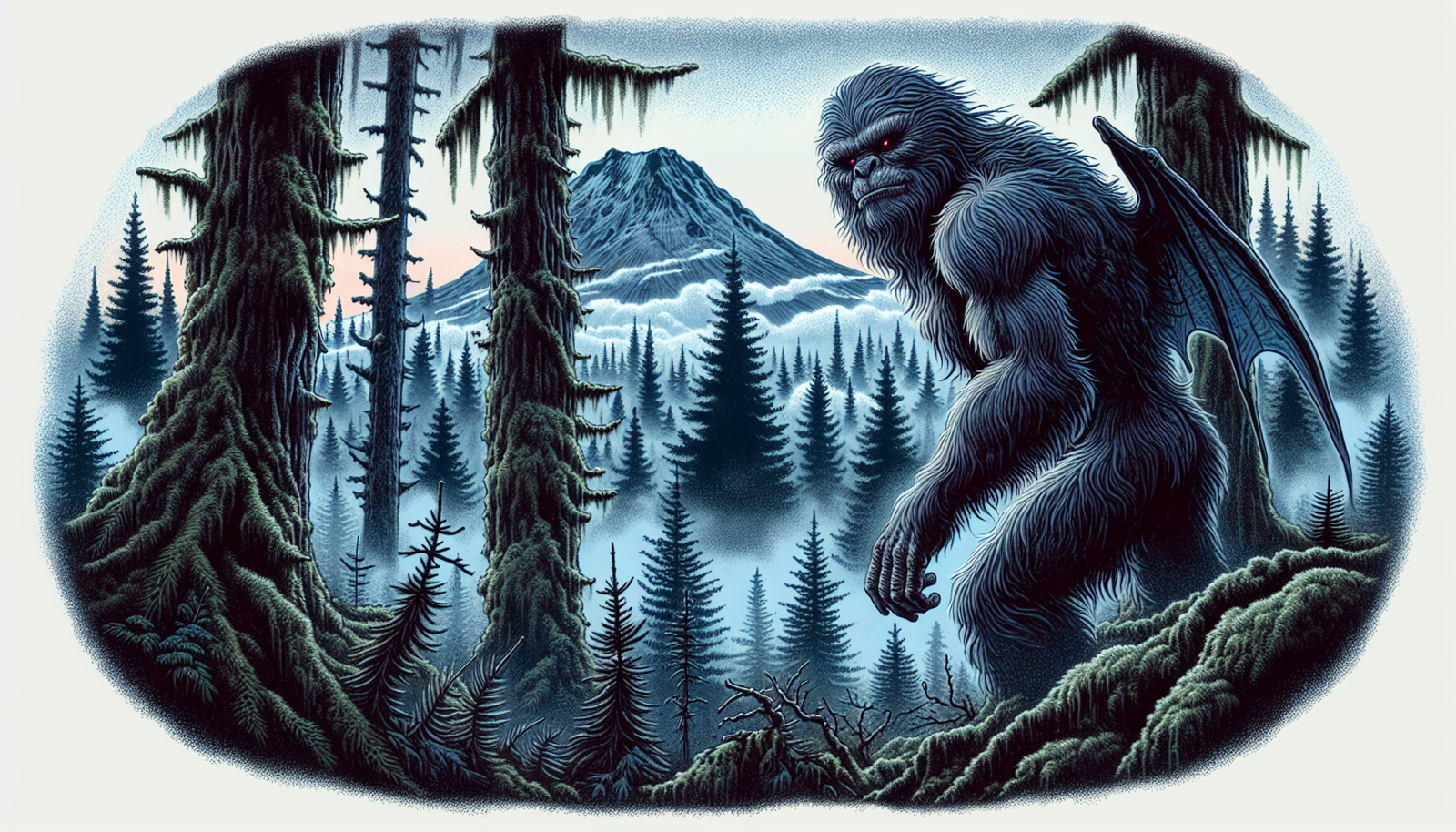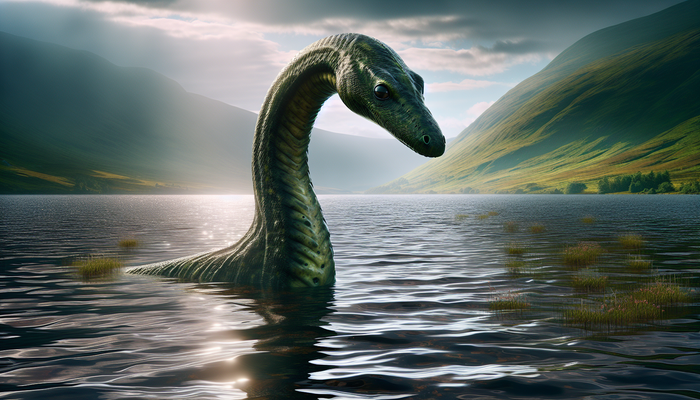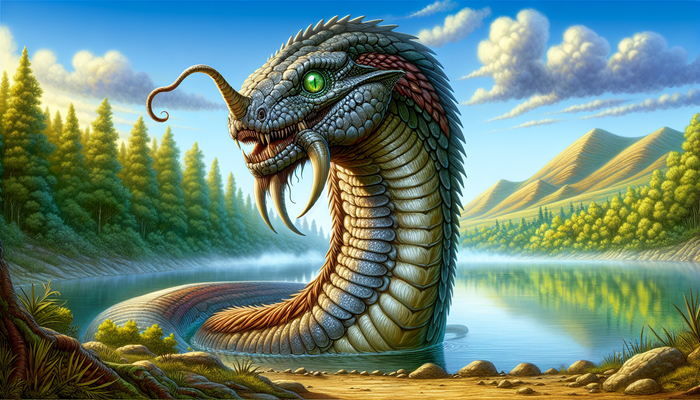Oregon Cryptids: From Bigfoot to Batsquatch

By Dr. Elizabeth Harper, Cryptozoologist and Biologist
Oregon: A Cryptozoological Wonderland
Nestled in the heart of the Pacific Northwest, Oregon is a land of untamed wilderness and unsolved mysteries. From the dense, mist-shrouded forests of the Coast Range to the rugged peaks of the Cascade Mountains, this diverse landscape has long been a hotbed of cryptozoological activity. The state's vast expanses of untouched nature provide the perfect habitat for all manner of mythical beasts and elusive creatures to roam undetected.
Oregon's rich history and folklore are steeped in tales of cryptids - animals whose existence remains unproven by science. These legends have been passed down through generations, originating from the oral traditions of Native American tribes and the campfire stories of early settlers, lumberjacks, and pioneers. Each region of the state boasts its own unique cast of cryptozoological characters, from the iconic Bigfoot of the forests to the bizarre Batsquatch of Mount St. Helens.
As a lifelong researcher of North American wildlife and a passionate investigator of cryptozoological phenomena, I have long been fascinated by the diverse array of cryptids that call Oregon home. Over the years, I have delved deep into the state's historical records, folklore archives, and eyewitness accounts, seeking to unravel the mysteries surrounding these elusive creatures. What I have discovered is a captivating tapestry of myth, legend, and tantalizing hints of the unknown.
In this article, we will embark on a journey through the mysterious realm of Oregon's cryptids, exploring the iconic and the obscure, the legendary and the little-known. From the towering Bigfoot to the winged wonder of the Batsquatch, we will examine the evidence, theories, and cultural significance behind these enduring enigmas. Along the way, we will grapple with the complex interplay between science and speculation, belief and skepticism, that lies at the heart of cryptozoology.
So join me, dear reader, as we venture into the misty forests, plumb the depths of ancient lakes, and soar through the skies of the Beaver State in search of the extraordinary. Together, we will explore the fascinating world of Oregon's cryptids and the enduring allure of the unknown.
Bigfoot: The King of Oregon Cryptids
No discussion of Oregon cryptids would be complete without delving into the legend of Bigfoot, also known as Sasquatch. This towering, ape-like creature has long been the king of the state's cryptozoological scene, with a history and cultural impact that far outstrip any other local legend.
The Bigfoot phenomenon in Oregon has deep roots in Native American tradition. Many tribes of the Pacific Northwest, including the Lummi and the Salish, have long told stories of wild, hairy men inhabiting the forests. The Lummi call these creatures "Ts'emekwes," while the Salish refer to them as "Sasquatch," a name that has since become synonymous with the cryptid worldwide.
These indigenous legends were later echoed in the accounts of early settlers and lumberjacks who claimed to have encountered massive, bipedal creatures in the Oregon wilderness. One of the most famous of these early sightings occurred in 1924 at Ape Canyon, Washington, just across the Columbia River from Oregon. Here, a group of miners claimed to have been attacked by a troop of large, ape-like beings hurling rocks from the cliffs above.
In the decades since, Oregon has become a hotspot for Bigfoot activity, with over 1,400 reported sightings - one of the highest concentrations in the country. The majority of these encounters have taken place in the densely forested Coast Range and Cascade Mountains, particularly in counties like Clackamas, Josephine, Jackson, Douglas, and Klamath.
Some of the most famous Bigfoot encounters in Oregon history include the 1967 Patterson-Gimlin film, which purports to show a female Bigfoot striding through the woods of northern California, not far from the Oregon border. While the authenticity of this footage remains hotly debated, it has become an icon of the Bigfoot phenomenon and has inspired countless investigators to scour the Pacific Northwest for signs of the elusive creature.
Bigfoot has also left an indelible mark on Oregon's cultural landscape. The cryptid is celebrated in numerous festivals, artworks, and local traditions throughout the state. Towns like Willow Creek and Happy Camp have become meccas for Bigfoot enthusiasts, with a thriving tourism industry built around the legend. Bigfoot-themed merchandise, from t-shirts to beer steins, is a common sight in gift shops and gas stations across Oregon.
Despite the enduring popularity of the Bigfoot legend, the creature's existence remains unproven by science. Skeptics argue that the lack of concrete evidence, such as clear photographs, video footage, or physical remains, suggests that Bigfoot is more myth than reality. They point to alternative explanations for sightings, such as misidentified bears, hoaxes, and the human tendency to see patterns in random stimuli.
Proponents of Bigfoot's existence, on the other hand, cite the sheer volume and consistency of eyewitness accounts, as well as intriguing pieces of circumstantial evidence like footprint casts and audio recordings, as proof that there is more to the legend than mere folklore. Some researchers have proposed that Bigfoot could be a relict population of Gigantopithecus, a giant ape that once roamed Asia, or perhaps an undiscovered species of hominid that has managed to evade detection in the remote wilderness of the Pacific Northwest.
Regardless of where one stands on the question of Bigfoot's existence, there is no denying the creature's power as a cultural icon and a symbol of the untamed mystery that still exists in the world. For many Oregonians, Bigfoot represents the wild heart of the state - a reminder that there are still wonders to be discovered in the misty forests and rugged mountains of the Pacific Northwest.
The Menagerie of Oregon's Humanoid Cryptids
While Bigfoot may be the most famous humanoid cryptid to roam the forests of Oregon, it is far from the only one. The state is home to a veritable menagerie of mysterious, bipedal creatures that have captured the imagination of locals and cryptozoology enthusiasts alike.
Oregon Dogman
One of the most intriguing of these lesser-known humanoids is the Oregon Dogman. Described as a towering, 7-foot-tall canine creature with a human-like face and torso, the Dogman has been spotted in various locations throughout the state, including Albany, Eugene, and the Klamath Falls area. Eyewitnesses report a beast with glowing red eyes, pointed ears, and a shaggy coat that walks upright like a man.
The origins and nature of the Oregon Dogman are shrouded in mystery. Some researchers speculate that it could be a rare, undiscovered species of primate that has adapted to a semi-bipedal lifestyle. Others suggest a more supernatural explanation, proposing that the Dogman is a werewolf-like entity or a manifestation of some ancient, primal force.
Gumberoo
Another humanoid cryptid that has left its mark on Oregon folklore is the Gumberoo. This bizarre creature, which features prominently in old lumberjack tales, is described as an obese, hairless bear-like beast with leathery, bulletproof skin and an insatiable appetite. According to legend, the Gumberoo hibernates in the hollow trunks of cedar trees, emerging only to devour anything and everything in its path.
One of the most peculiar aspects of the Gumberoo legend is the claim that the creature's hide is impervious to weapons. Lumberjacks would allegedly shoot at the beast, only to watch in amazement as their bullets bounced harmlessly off its thick, rubbery skin. Even more strangely, it is said that the smoke from a burning Gumberoo will turn the innards of anyone who inhales it into rubber - a gruesome fate indeed!
While the Gumberoo is clearly a creature of folklore and tall tales, some researchers have proposed that the legend may have originated from sightings of real-world animals like bears with severe mange or other skin conditions that gave them a hairless, leathery appearance.
Wildman
A third humanoid cryptid that has been reported in the remote wilderness areas of Oregon is the Wildman. Similar to Bigfoot in its general appearance, the Wildman is said to be a large, hairy, bipedal creature that is distinguished by its more aggressive behavior and foul odor. Some eyewitnesses have described the Wildman as having a more human-like face than Bigfoot, leading to speculation that it could be a feral human, a Neanderthal relic, or perhaps a subspecies of Sasquatch.
The Wildman is often associated with the dense forests and rugged terrain of eastern Oregon, particularly in the Blue Mountains and the Wallowa-Whitman National Forest. Sightings of the creature are relatively rare compared to Bigfoot, but those who claim to have encountered it describe a powerful, musky odor and an overwhelming sense of dread in its presence.
As with many humanoid cryptids, the true nature of the Oregon Dogman, Gumberoo, and Wildman remains a mystery. While some researchers continue to search for evidence of their existence, others dismiss them as products of folklore, misidentification, or hoaxes. Regardless of their ultimate reality, these enigmatic creatures have become an integral part of Oregon's rich tapestry of cryptozoological lore, adding to the sense of mystery and wonder that permeates the state's wild places.
Monsters of the Deep: Oregon's Aquatic Cryptids
Oregon's cryptozoological wonders are not confined to the land alone. The state's numerous lakes, rivers, and coastal waters are said to be home to a variety of aquatic monsters that have captured the imagination of locals and visitors alike.
Devil's Lake Monster
One of the most famous of these water-dwelling cryptids is the Devil's Lake Monster of Lincoln City. According to Native American legend, this giant, hairy, octopus-like creature inhabits the depths of Devil's Lake, where it is said to capsize canoes and drag unsuspecting victims to their doom. The legend gained new life in 1950 when the carcass of a strange, tentacled beast allegedly washed ashore on the lake's banks.
Eyewitnesses described the Devil's Lake Monster as having a large, round body covered in shaggy hair, with multiple long, serpentine arms radiating from its center. Some researchers have proposed that the creature could be a previously unknown species of freshwater cephalopod, while others suggest that it may be a misidentified sturgeon or other large fish.
Colossal Claude
Another aquatic cryptid that has left its mark on Oregon folklore is Colossal Claude, a 40-foot-long river serpent said to inhabit the waters of the Columbia River near Astoria. Claude was first sighted in 1934 by the crew of a lightship stationed near the mouth of the river. The sailors described a massive, snake-like creature with a horse-like head and evil, glinting eyes that swam alongside their vessel for several minutes before disappearing into the depths.
In the 1960s, Claude gained renewed attention when a Shell oil expedition allegedly captured footage of a similar creature swimming in the Columbia River. The video, which shows a large, serpentine animal undulating through the water, has been the subject of much debate and analysis over the years, with some researchers claiming it as evidence of Claude's existence and others dismissing it as a hoax or misidentification.
Theories about the true nature of Colossal Claude range from the mundane to the fantastic. Some suggest that the creature could be a surviving plesiosaur, a type of long-necked marine reptile that went extinct millions of years ago. Others propose that it may be a giant eel or some other undiscovered aquatic species that has managed to evade scientific detection in the murky waters of the Columbia River.
Wallowa Lake Monster
Moving further inland, we come to the legend of the Wallowa Lake Monster, a serpentine creature said to inhabit the depths of Wallowa Lake in northeastern Oregon. According to Native American folklore, the monster was responsible for the tragic deaths of two star-crossed lovers from warring tribes who had attempted to elope by crossing the lake in a canoe.
Descriptions of the Wallowa Lake Monster vary widely, with some eyewitnesses claiming it resembles a giant snake up to 100 feet long, while others describe it as more of a hippo or hog-like creature with a massive, rounded body and short, stubby legs. Some accounts even suggest that there may be multiple monsters inhabiting the lake, each with its own distinct appearance and behavior.
Like many aquatic cryptids, the true nature of the Wallowa Lake Monster remains a mystery. Some researchers have proposed that it could be a misidentified sturgeon or other large fish, while others suggest that it may be an undiscovered species of freshwater mammal or reptile. Still others believe that the monster is a purely supernatural entity, a manifestation of the lake's mysterious and sometimes tragic history.
Other Notable Water Cryptids
Other notable water cryptids that have been reported in Oregon include:
- Wally, another serpentine creature said to inhabit Wallowa Lake
- Ogopogo, a Nessie-like monster allegedly spotted in Crater Lake
- The Willatuk, a massive, octopus-like beast that some believe lurks in the waters of Puget Sound just north of the Oregon border
While the existence of these aquatic cryptids remains unproven, they continue to capture the imagination of those who live near Oregon's lakes, rivers, and coastal waters. For many, the idea that such mysterious and potentially dangerous creatures could be lurking just beneath the surface adds an extra layer of intrigue and excitement to the state's already stunning aquatic landscapes.
Winged Wonders: Oregon's Flying Cryptids
Oregon's cryptozoological menagerie extends beyond the earthbound and the aquatic - the state is also home to a number of fascinating flying cryptids that have been reported in its skies and forests.
Batsquatch
Perhaps the most famous of these winged wonders is the Batsquatch, a bizarre hybrid creature that is said to combine the features of a bat, a primate, and a wolf. According to eyewitness reports, the Batsquatch has a muscular, humanoid body covered in blue-black fur, a wolf-like head with glowing red eyes, and massive, leathery wings that span up to 50 feet from tip to tip.
The Batsquatch first gained notoriety in the 1980s, when a series of sightings were reported in the vicinity of Mount St. Helens in southwestern Washington, just across the Columbia River from Oregon. Witnesses described seeing a large, winged creature flying over the devastated landscape left behind by the mountain's catastrophic 1980 eruption, leading some to speculate that the Batsquatch may have been disturbed from its lair by the volcanic activity.
Since then, sightings of the Batsquatch have been reported throughout the Pacific Northwest, including several in Oregon. Some researchers have proposed that the creature could be a rare and elusive species of giant bat that has managed to evade scientific detection, while others suggest that it may be a prehistoric holdover from the time of the dinosaurs.
From Bigfoot to UFOs: Hangar 1 Publishing Has You Covered!
Explore Untold Stories: Venture into the world of UFOs, cryptids, Bigfoot, and beyond. Every story is a journey into the extraordinary.
Immersive Book Technology: Experience real videos, sights, and sounds within our books. Its not just reading; its an adventure.



























